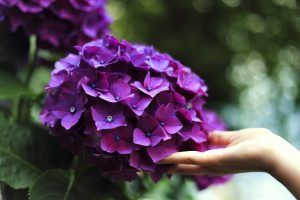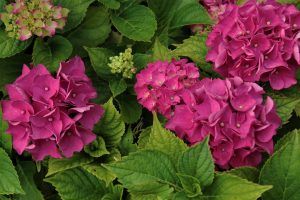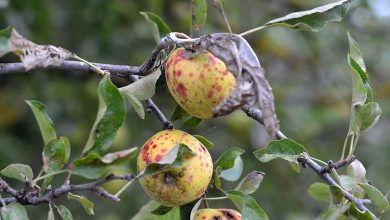How often and how to water my hydrangeas?

 That you have a hydrangea and you don’t know how to give it? You are in luck because in this guide we have dedicated ourselves to answering the most frequently asked questions on this topic.
That you have a hydrangea and you don’t know how to give it? You are in luck because in this guide we have dedicated ourselves to answering the most frequently asked questions on this topic.
Yes, because having a hydrangea plant is one thing and enjoying incredible blooms is another.We like the second one and the issue of irrigation is one of the main factors to achieve that goal.
So we better get down to the letters and do not forget to write down everything you need about watering hydrangeas.
Important points when watering hydrangeas:
- Irrigation frequency: in summer, daily or every two days. In winter, every 5 or 7 days.
- Irrigation method: by a drip system.
- Optimum time of day for irrigation: early in the morning or at night.
- Identify excess water: flaccid stems, weak flowers, yellow leaves.
- Identify lack of water: leaves that dry, lose shine and can fall. Flower buds not developing.
What watering needs do hydrangeas have?
The hydrangea is very demanding when it comes to soil moisture, so you have to pay attention to providing it with enough watering so that it is happy.Due to temperature changes, spring and summer will be the times of greatest demand, while in cold weather it will be less.

In addition to watering, on the hottest days of summer it will be grateful if you refresh its leaves by giving it water with a sprayer. If you have it in the garden, it will enjoy the rain very much and, if you have it in a pot, maybe you can take it out eventually or collect said water because it is the best.
And it is that hydrangeas are a bit delicate when it comes to hard water, so you have to pay attention to this detail.
How can we detect lack of irrigation in hydrangeas?
 The lack of irrigation in hydrangeas is harmful to their health and will have a very negative impact on flower production.
The lack of irrigation in hydrangeas is harmful to their health and will have a very negative impact on flower production.
The first thing you will notice is that the flower buds will start to fall off without developing, which will be a slowdown around flowering.
The leaves will also tell you that something is not right because they will become a bit dry, they will lose luminosity and they will also fall while being green. The good thing is that it is an easy problem to solve by applying a deep irrigation that penetrates to the interior of the substrate.
Afterwards, you just have to let the plant drain off the excess liquid and maintain the usual frequency of watering that works well for it depending on the time of year.
How often should we water the hydrangeas?
In order for you to establish a watering frequency that is well adapted to the conditions of your plant, you have to assess the environment. The most common is that in summer the frequency is established in daily or interdaily watering at most to ensure that the soil remains moist.

On the contrary, in winter you will have to space the irrigation, placing it in one every 5 or 7 days, depending on how you see the conditions of the land. Remember that the important thing is to water to achieve a good level of humidity but without flooding.
What is the best way to water hydrangeas?
Drip irrigation is the most appropriate to supply water to hydrangeas and ensure that they are healthy. You can implement it with an automatic or manual mechanism, with the use of a shower, according to your particular conditions.


The important points that you must consider is that the outflow of the water is low so that the earth gradually absorbs the liquid.
If you apply the irrigation all at once, what you will generate is a puddle in the upper part of the pot but the bottom will remain dry. Avoid watering from above so that the flowers and leaves do not get wet because it can open the door for diseases.
How do we detect excess water in hydrangeas?
Controlling the level of humidity in the hydrangeas will be a task to which you must pay close attention, since waterlogging is harmful. Very wet soil is not the same as soil with standing water because the latter could cause fungal growth and root death.
Take into account that excessive water prevents the roots from breathing, so they will eventually die. Excess water can be noticed with yellow leaves, flaccid stems and flowers that lose their usual vigor.

Hydrangeas are plants with beautiful blooms that can color your garden in different shades depending on the type of plant you choose. Giving them the love they deserve is a privilege and one of the most practical ways to do it is through watering hydrangeas.
Bibliographic references
- Evaluation of the water footprint of the cultivation of flowers of the hydrangea species in the municipality of Facatativá, LC Casas Vega, LF Melo Morales – 2016 – Ciencia.lasalle.edu.co
- In vitro propagation of hydrangea (Hydrangea macrophylla thunb. Ex JA Murr. Ser) for the production of cuttings JJD García, RN Alzate, BMG Gutiérrez… – … Católica de Oriente, 2011 – 200.9.158.34
- Optimum management of the cultivation of hydrangea (Hydrangea macrophylla) in a pot, R Huerta Miranda – sidalc.net
- The forced cultivation of hydrangea as a flower potted plant, DE Morisigue – Argentine Congress of Floriculture and Plants…, 2010 – sidalc.net
- Characterization of the phenological development of hydrangea (Phenological behavior of Hydrangea macrophylla VS Growth time), KY Valencia Valencia – 2021 – Bibliotecadigital.udea.edu.co
- System of lucrative cultivation in favor of the environment to a hydrangeas greenhouse applied by free hardware, EG García – Nextia, 2021 – uvp.mx
Maybe you are also interested in:
- How to Fertilize Hydrangeas: Our Formula – Sembrar100
- Hydrangeas Care: [Soil, Humidity, Pruning and Problems]
- Hydrangea Care: [Soil, Humidity, Pruning and Problems]
- Prune Hydrangeas: [Importance, Season, Tools, Considerations and Steps]
- Transplant Hydrangeas: [Conditions, Time, Tools and Steps to follow]

![Photo of Tiger Nuts: [Cultivation, Irrigation, Care, Pests and Diseases]](https://www.complete-gardening.com/wp-content/uploads/2022/08/tiger-nuts-cultivation-irrigation-care-pests-and-diseases-390x220.jpg)
![Photo of The Pine: [Planting, Characteristics, Irrigation, pH, Pruning, Problems]](https://www.complete-gardening.com/wp-content/uploads/2022/08/the-pine-planting-characteristics-irrigation-ph-pruning-problems.jpg)

